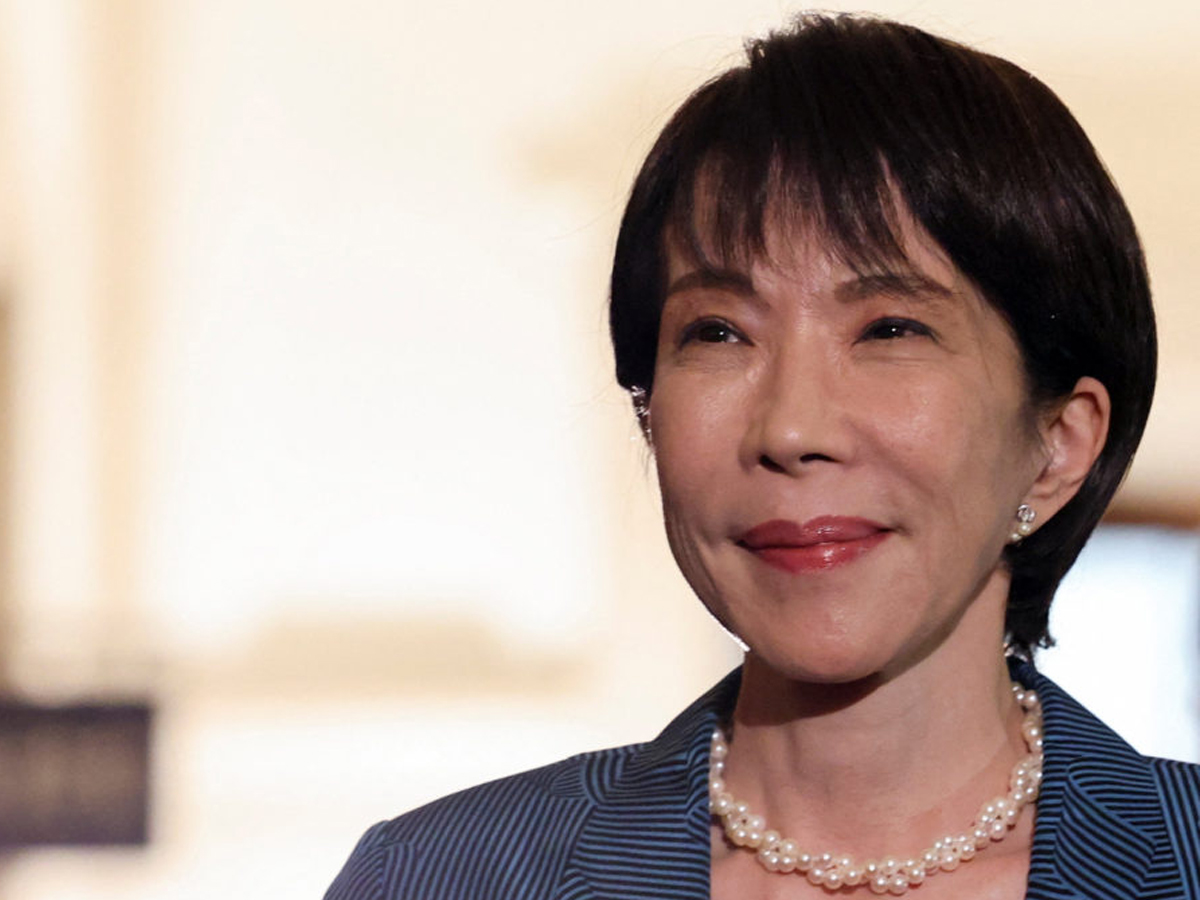Sanae Takaichi Becomes Japan’s First Female Prime Minister, Marking a Defining Moment in the Nation’s Political History
Sanae Takaichi Becomes Japan’s First Female Prime Minister, Marking a Defining Moment in the Nation’s Political History
By
Junia Wells
Last updated:
October 21, 2025
First Published:
October 21, 2025

Photo: The Daily Guardian
Sanae Takaichi has officially made history, becoming Japan’s first-ever female prime minister after securing a decisive parliamentary victory on Tuesday. Her election marks a transformative moment for the world’s fourth-largest economy, long dominated by male leadership, and signals potential shifts in both domestic and foreign policy.
According to Japan’s public broadcaster NHK, Takaichi won 237 votes in the 465-seat Lower House, surpassing the majority threshold and avoiding the need for a runoff. The result follows a weekend coalition deal between the ruling Liberal Democratic Party (LDP) and the Japan Innovation Party (JIP), setting the stage for a new era in Japanese politics.
Coalition Politics and Policy Priorities
Takaichi’s victory comes after weeks of negotiations between the LDP and JIP, culminating in an agreement to jointly push forward a set of policy reforms. Among the key commitments are reducing the number of parliamentary seats, making high school education free nationwide, and introducing a two-year suspension of Japan’s food consumption tax — a move aimed at easing inflationary pressure on households.
Reports from domestic media suggest that the JIP may support the administration from outside the cabinet rather than taking ministerial positions. Political analysts note that this arrangement allows the JIP flexibility to exit the coalition if the government’s approval ratings — currently hovering around 30%, one of the lowest in decades — fail to recover.
Tobias Harris, founder of Japan Foresight, emphasized that “the JIP faces a real risk aligning too closely with an LDP that is struggling with public trust,” highlighting how fragile this alliance could become.
A Hard-Fought Path to Leadership
Takaichi’s journey to Japan’s top political office has been marked by resilience and persistence. In the 2024 LDP presidential election, she was defeated by Shigeru Ishiba, who later resigned amid widespread criticism over electoral losses that cost the LDP its majority in both houses of Parliament.
In September 2025, Takaichi defeated Agriculture Minister Shinjiro Koizumi to reclaim the LDP leadership. However, her path remained uncertain after the Komeito Party abruptly ended its 25-year alliance with the LDP earlier this month — a political rupture that had left Japan in a state of uncertainty until her coalition deal with JIP restored stability.
Market Reaction: Gains Fade Amid Caution
Financial markets initially reacted positively to Takaichi’s win, with the Nikkei 225 climbing 1.5% earlier in the day. However, gains were later erased as investors weighed the potential policy implications of her administration. The 10-year government bond yield slipped 1.6 basis points to 1.654%, while the yen weakened by 0.33% to 151.25 per dollar, signaling mixed investor sentiment.
Analysts say the market’s cautious reaction reflects uncertainty over fiscal spending plans and Japan’s monetary policy trajectory. Takaichi, a staunch conservative and longtime supporter of “Abenomics,” has voiced opposition to the Bank of Japan’s recent rate hike plans, suggesting that monetary easing remains crucial to sustaining growth amid sluggish wage increases.
Economic Vision and Foreign Policy Outlook
As a self-described disciple of late Prime Minister Shinzo Abe, Takaichi is expected to emphasize economic stimulus, innovation-driven growth, and structural reform to combat deflationary pressures. Her platform includes bolstering domestic manufacturing and technological competitiveness, particularly in semiconductors, clean energy, and AI research — areas seen as critical for Japan’s long-term resilience.
On foreign policy, Takaichi is known for her firm stance toward China and strong support for Japan’s security alliance with the United States. She has repeatedly called for strengthening national defense and revising Japan’s pacifist constitution to allow greater military flexibility. Her past visits to the Yasukuni Shrine, a site honoring Japan’s war dead including convicted war criminals, have drawn sharp criticism from China and South Korea, both of which view the visits as symbols of wartime insensitivity.
However, political observers believe Takaichi will tread carefully in her diplomatic approach. Kei Okamura, managing director at Neuberger Berman, noted that “while her views on China and Korea are well known, she understands the importance of maintaining stable relations — especially with Japan’s key export markets and security partners.”
A Historic Shift for Japan
Takaichi’s election is more than just a political milestone; it represents a cultural shift in a country where women make up less than 10% of lawmakers and corporate board members. Her rise could inspire greater gender inclusivity across Japan’s institutions, even as she faces pressure to prove her leadership in a challenging economic and geopolitical environment.
As Japan enters a new chapter under its first female prime minister, the world will be watching closely to see whether Takaichi can restore confidence in Japan’s political system — and deliver on her promise to blend conservative stability with forward-looking reform.
Popular articles
Subscribe to unlock premium content
The Hidden Economy of Minecraft Server Plugins That Earn Thousands Monthly

Why Classic Ferrari F40s Command Prices Higher Than Some Modern Hypercars

How The Gentle Monster Sunglasses Brand Became a Cult Fashion Phenomenon in Korea

The Hidden Economy of Minecraft Server Plugins That Earn Thousands Monthly

Why Classic Ferrari F40s Command Prices Higher Than Some Modern Hypercars

The Hidden Economy of Minecraft Server Plugins That Earn Thousands Monthly









